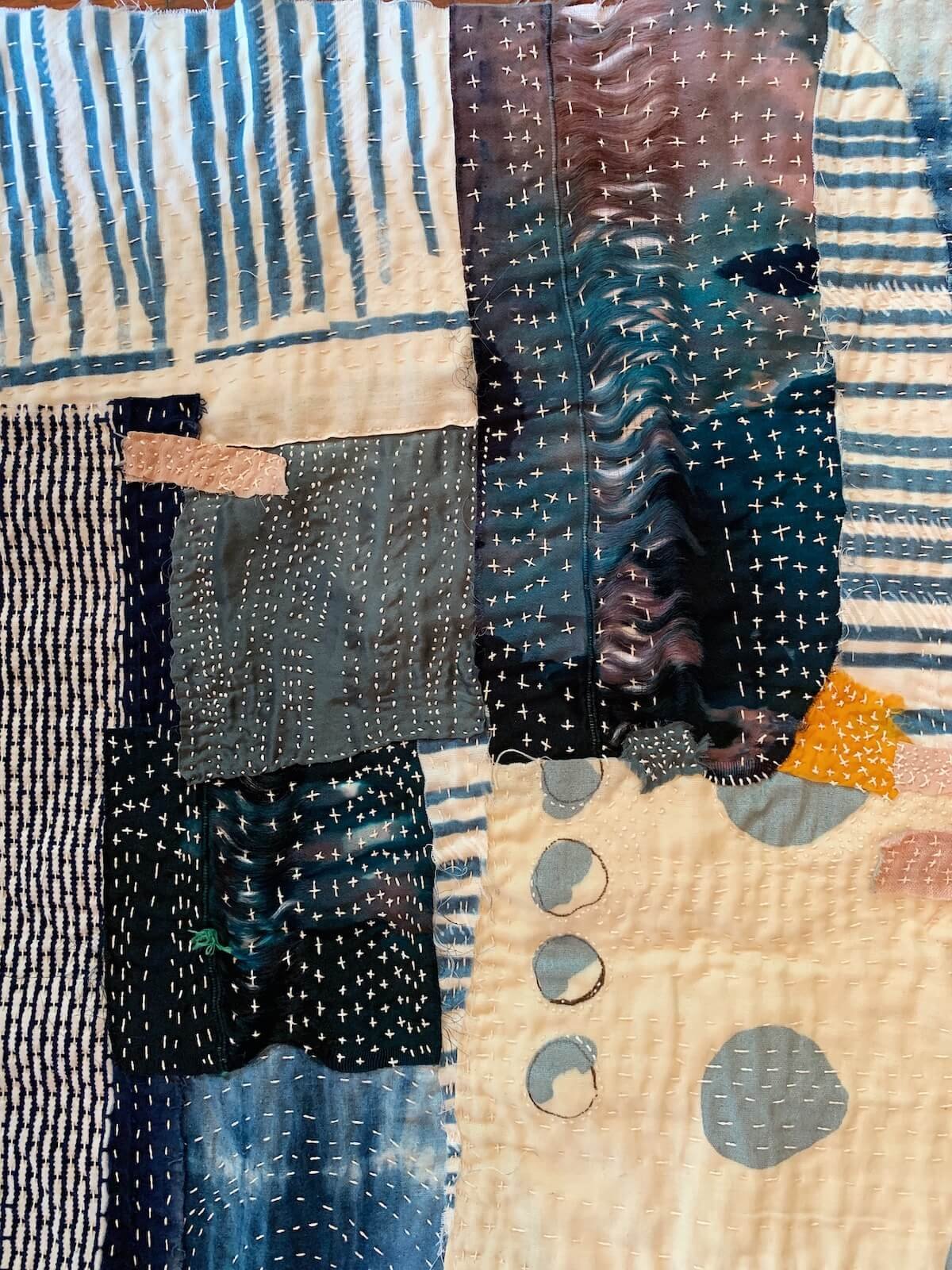how to create a daily stitching practice
During our monthly community conversation we talked about the feeling of doing nothing. This has come up again and again, for me. And for others. I think I’ve already talked about it here, on this blog. And on Instagram. And not talked about it too.
One of our community members said that she has lots of time. And is just floating about, doing nothing. So we talked about ways to work through this. Ways to come back to our making.
I’ve been thinking about turning routine into rituals. And I think this is a good way to approach getting into something that we want to be doing, something we want to be a special part of our day, to flow with. And not to force. Not to feel worried about why we’re not doing it.
Having lost our mojo is hard. Can be hard. Wondering if it will come back. It will. It will! It will come back. Please believe me on that.
How to turn routine into ritual in our creative making
With this in mind, the thing of not being able to do our creative making everyday, I’ve started doing some small pieces that are finished in a day or two. Sometimes I spend 15-minutes with my making. Sometimes I’ve been spending an hour or not. This is what I started with. One little round blue circular bag. And then I made a handful more. I know that when I’m making something I have to keep going with the flow; eventually I stop and move onto the next thing. And that’s ok.
Here’s some ideas that might help you, when you have that floaty lost feeling about your making:
sit with the quiet, that’s ok
There will always be times when we just need that thinking time. Remember that nature has the quiet internal of Winter, so it’s good for us to have that as well. The seasons of our makings lives are very important to honour.
set yourself up with small doable, actionable projects
Start small - don’t overwhelm yourself with a big pile of fabrics or possibilities. I find that when I narrow down and have one thing / one choice only that I’m more likely to do that one thing
lay out a project the night before
Having all your supplies cut and ready makes it easier to start. When you don’t have to decide what to make or where to start, then doing that small action in the evening means the next morning doesn’t have that decision paralysis.
be gentle on yourself
If you miss a day of making, or don’t spend as much time as you wanted; please please be gentle on yourself. Every new day is a chance to start again. It’s important to remember that time not doing is as valuable as time doing. We need rest time, thinking time, contemplation for the project.
think of a monthly project to work on
This makes is fun and easy to know what’s next. I find it’s a good way when I’m feeling a little bluggghhh about coming to my stitch practice that having an actual ‘project’ really does help.
One I loved working on last year was this one. I started the beginning of the month cutting out 30 squares(ish) approximately the same dimensions. I gathered some threads to use, which I had in a little bowl easy to pick up each day. With my sewing needles, scissors and necessary supplies. This meant I was ready each day.
Having a set stitch I wanted to work on, and the circle design I planned to work within really gave me some parameters. I told myself I simply had to stitch one a day; which I knew would be an easy job. About 15 or so minutes per piece. For the first half or third of the month I stitched inside the circles, I used whichever thread I wanted from the (minimal) selection and simply stitched. After a while I started expanding the stitches outside of the circle lines. I had found my creativity returning which meant I no longer had to ‘colour within the lines’ (so to speak).
set yourself a time limit
This works for a lot of things. Say to yourself ‘I’ll only do 15 minutes, that’s all I need’. Our brains can work with that, it’s not too overwhelming or stressful to think beyond 10 or 15 minutes. Once we’ve started we usually keep going. This is especially helpful with exercise (in theory). It does work with house cleaning, or garden work.
realise also that now might simply be a quiet Winter for you.
It’s ok to let yourself rest, to be in the depth of your own time. We don’t all have to be creative all the time. I do truly believe that we need to follow the cycle of the moon, our moods, our menstrual cycle, the world’s overwhelm and our own personal seasons.
I know that I’m more energised and invigorated to do certain work once the Spring starts to warm up. I feel like a sloth during Winter and can only do certain projects that don’t require a lot of outside work, or big thinking. I need space at my table to start something. I need warmth.
This Winter I have made - started, in-progress, and even finished - a few quilts. I’ve loved having them on my lap and at my sewing table. Once Spring and Summer come upon us I’ll move out into the garden and do more plant natural dye work.



